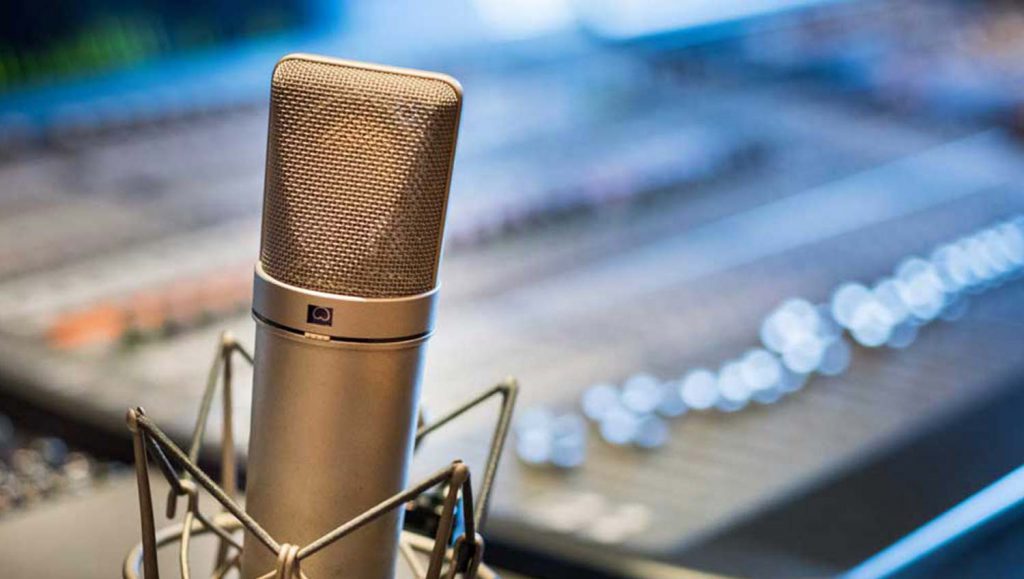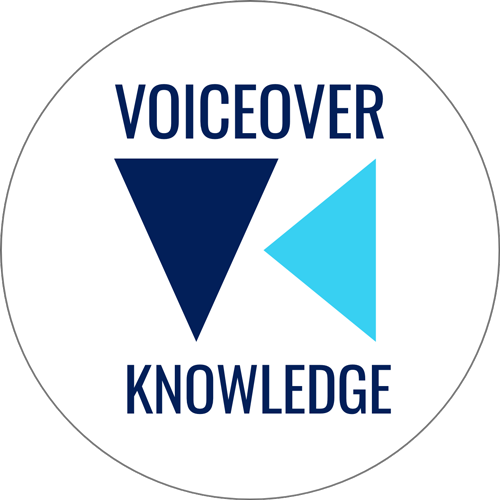
The Best Microphone For Voice Over and Voice Acting
If you dream of working in voice over or voice acting, then you’ll want to make sure you buy the best microphone for your budget.
Getting it wrong can be costly and leave you with an expensive ornament in a drawer. On the other hand, a good microphone will serve you well for years.
Here’s some information you need to help you make the right choice and invest wisely in your voice-over career.
Table of Contents
Table of Contents
The Best Ever Voice Over Microphone Advice.
Here’s the single best piece of advice I can give you about choosing a microphone for your voice-over studio. Someone once said it to me, although I can’t quite remember who.
“A hundred pound mic in a thousand pound space will sound like a thousand pounds. But a thousand pound mic in a hundred pound space, will sound like a hundred pounds.”
Unknown. I wish I could remember.
It’s not the most eloquent. But, to put it another way… your microphone is only as good as the space in which it sits. In fact, putting a better mic in a bad space will often sound worse.
Many years ago, I worked for a radio group. Presenters at a sister station were excited that their microphones were being upgraded to Neumann from a lower price Audio Technica.
It just so happened that this radio station was actually based in a shopping centre, and there was a corridor adjacent to the studios used by members of the public. The new microphones were a nightmare, and they reverted to the originals within a couple of weeks. The reason? The new microphones were so much more sensitive, they were picking up footsteps outside that couldn’t be controlled. The original mics were less sensitive and more ‘forgiving’ of the noise.
The lesson: Don’t buy an expensive microphone, if you’re recording in a cupboard with poor sound treatment.
So with that out of the way, let’s talk microphones.
Types of Microphone.
- Large Diaphragm Condenser Microphones.
- Shotgun Microphones
- Ribbon Microphones.
- USB Microphones.
- Small Diaphragm Condenser Microphones
- Dynamic Microphones
There are two or maybe three types of microphones that we might really concern ourselves with for voice-over work:
For brevity, I’m going to concentrate on the Large Diaphragm Condenser and Shotgun in the main article and I’ll also explain why I don’t recommend USB microphones.
You can read about all the other mics in this section.
The Small Diaphragm Microphone.
Let’s discount the Small Diaphragm Microphone. I can’t remember the last time I saw one. Being more discreet, these can be used for mic-ing a space. Especially if you want a stereo effect, with two mics in place.
The Dynamic Microphone.
Let’s also discount the Dynamic Microphone. This is the mic that most people outside our industry are likely to have seen and possibly used.
The daddy of dynamic microphones is the Shure SM58. It’s been the work-horse of live public address systems my entire career (30+ years). Used by DJs, Karaoke singers and in concerts the world over. It’s robust. If you drop it on the floor, you can pick it up and carry on. It’s not suited to voice-over work. It’s just not subtle enough to produce the sound you’re probably looking for.
There is one other dynamic mic talked about in voice-over. The Shure SM7B. I’ve never had the personal pleasure, but it seems to divide opinion. It’s increasingly used in podcasting. My gut feeling, is it’s simply not a condenser mic. It may be suitable for podcasting and such.
The Ribbon Microphone.
The Ribbon Microphone first appeared in the 1920s and was a staple with broadcasters back in the 1950s and beyond. So called, because it uses a metal strip to act as its diaphragm.
Technically it falls into the diaphragm category. It’s rather obscure these days, but favoured by a few. There’s nothing wrong with it as such. You could use it for voice-over, but it would be unusual as a choice for your first mic, unless you inherited it.
The Large Diaphragm Condenser Microphone.
The Large Diaphragm Condenser Microphone is the microphone type favoured by most professional voice-overs and studios. It is larger, more delicate and much more sensitive versus the dynamic microphones found in the live events environment.
At its heart is a capsule (if you stare into the grill you can see it). The capsule contains the diaphragm which is a thin membrane that converts your sound to signal.
For voice-over work, where nuance is everything, a large diaphragm microphone is ideal. It captures a more true, natural sound. If you are looking for the best microphone for voice narration or a mic for voice acting, a condenser would be my choice.
Best Microphone For Vocal Performance.
Possibly the most famous of these microphones is the Neumann U87. It is considered by many to be the best mic for vocals. With a price of around £2.5k, it’s often outside many voice-over artists’ budgets. At least for a first mic purchase. There are other lesser mics that seek to imitate its sound. Notably, I often hear people compare the Rode NT1. Similar characteristics at a fraction of the price.
Popular Large Diaphragm Microphones Include:
- Neumann U87
- Neumann TLM 103
- Neumann TLM 193
- Audio Technica 4033a
- Rode NT1
- Rode NT1A (different to the NT1)
- Aston Spirit
The Shotgun Microphone.
A little less popular, but still used by many is the Shotgun Microphone. A shotgun mic is directional. This means it can be more ‘punchy’ in cutting through. It also has the side benefit for some that the directional quality reduces other nearby noise. It’s commonly used in ‘promo’ – trailers and the like, where the voice is debatably slightly more of an announcer style. In a more natural performance, especially where there is movement, it is very easy to be off-mic, as the pick-up range is more focused.
The most favoured shotgun mic for many is the Sennheiser mkh 416. It also has its imitators. Expect to pay around £800.
Popular Shotgun Microphones Include:
- Sennheiser MKH 416
- Synco Mic D2 – (a recent budget challenger to the 416)
- Rode NTG2 or NTG3
Shotgun microphones are also very popular when shooting video or film. When you see a sound guy with a long boom pole and a mic on the end, it’s often a shotgun mic. Although it’s probably hidden in some kind of wind and weather protective case.
Voice Over Microphone Accessories You’ll Need.
If you’re trying to work out which microphone you can afford, make sure you include the accessories that you need.
Let me use my own experience as an example.
I own a Neumann TLM 193 mic. Current prices are around £1000.
Microphone Shock Mount.
To use it, you’ll need a “Shock Mount”. This is a special ‘cradle’ that the mic sits in to reduce vibrations. Shock Mounts use elastic band type threads to ‘string up’ the mic. The mic is very sensitive, and you’ll need something to reduce noise transmission along the mic arm.
Expect to pay around £200 for a Neumann EA1 MT.
Microphone Boom Arm.
This was a cost I wasn’t expecting. I already had a mic arm which I’d happily used on my AT4033a for many years. It cost about £40. My Neumann was heavier and just drooped all the time. I swapped out the old arm for something more robust, which was north of £100.
Phantom Power.
Whilst many dynamic mics will just plug and play, condenser mics generally don’t. Most need a source of power. Specifically, they need something called “Phantom Power”. This is a power source, typically up to 48V, that can be provided by the mixer or interface or some other device.
Often you’ll see a Phantom Power Switch on interfaces or mixers which you can turn on, to power the microphone. This can sometimes cause difficulty if you are powering your interface over a long cable (although this is for another article).
Balanced Microphone Cables.
Cables can be balanced and unbalanced (as there are balanced and unbalanced signals). So, let’s try to make sense of the science bit…
In an unbalanced cable there is a ‘signal’ wire and a ground wire. In the unbalanced wire, the audio signal is simply passed through the single signal wire and thus is prone to interference. That interference can introduce distortion or fluctuations in the signal, which affect the gain level.
In a balanced cable there are 2 ‘signal’ wires and a ground wire. Here, one of the 2 signals is inverted and at one end and then reverted at the other end. This allows the signals to be matched and any additional noise or distortion to be out of phase and removed, thus retaining a quality signal.
I’m sure some true engineers will be shaking their heads at this point, but for our purposes the key takeaway is balanced cables mean less noise. For the sake of a few quid, personally I would advise a balanced cable, especially if you’re running the cable over a distance. (Longer distance increases the likelihood of interference).
Microphone Pop Shield or Muff.
Some might say that a shield or muff isn’t a necessity, and that good technique is all you need. Technically that’s true, but it’s an extreme view. These are both products which protect your microphone from pops and breath wind.
A shield is usually a circular filter on an arm which attaches to your mic arm. A muff is a foam shield which slips over the microphone like a sock.
In my experience, a pop shield is more likely found in a voice-over studio or recording studio. A muff is more likely found in a radio studio. I have both, but my view is that the muff takes a little bit off the top frequencies of the sound, so I prefer to use the shield.
The USB Microphone
Controversial opinion alert. I’m probably going to upset some with this. I’m resistant to USB microphones for professional standard work. They are convenient, reasonably priced and often don’t need some of the extras listed above. However, they also are known to produce more ‘self-noise’ than microphones using an XLR connection. (This is the standard for most mics. A three pin connector).
They are often talked about in forums and groups. If you need to record something easily, whilst on holiday for an audition, then great. If you need to record actual work, then I would want to be sure that the client is happy with that quality. I guess there are some jobs where this quality might be okay. I’m thinking maybe phone prompts as an example.
The one time I would suggest a USB Microphone is if you are starting out on your training journey, and you are looking for something simple to plug and play, where you can practice.
Anecdotally, although I’ve never owned one and don’t suggest it as your main mic, from all the opinions I’ve heard, if you go down this route, you could do worse than the Rode NT USB. It seems to be the most favoured and isn’t expensive.
Microphone Snobbery.
This brings me to another point. So called ‘microphone snobbery’. It’s true, it might exist to a point, but put yourself in the producer’s shoes for a second. You have an important project to record and a client to keep happy. The two most important items in the recording chain that stand between the engineer and the voice-over’s perfect take are the microphone and its audio interface. (The recording space also matters). If any of these are sub-standard, you risk a bad result, no matter how good the performance is. Also, studio kit is an area where the producer is often expert and the voiceover, frankly, is not.
Think of it as ‘qualifying’. They ask about your kit to ensure you are operating at an industry standard. So you might have an amazing mic or a fantastic new way of connecting remotely that they’ve never heard of. To them, that’s a risk. They don’t want a risk in front of a client. They like what they know and trust.
One of the things I noticed during Covid was that some studios, who were now reluctantly using talent in their home studios, were asking for what I’d call an “end studio slate”, where after recording an audition in your studio, you then had to state your microphone, interface, and connection, (typically) the paid version of Source Connect. These guys are dealing with major projects with many moving parts, of which you are just one. Yes, they’re concerned that you’re equipped to do the job to their standard. If high end commercial jobs are your aim, then this kind of detail is important.
Other Microphone Tips:
Second-Hand Microphones.
This is a personal opinion, but here goes. Unless you know the provenance of the microphone, don’t buy second-hand. You might pick up a bargain on Ebay, but it also may have been dropped on the floor and have internal damage that isn’t obvious. If you can afford to lose the money, crack on. If you can’t, proceed with caution, especially if we are talking about a higher value mic.
Test A Microphone First.
Every voice is different. You may well find that a particular mic is fantastic or conversely, terrible with your voice. Certainly there are some mics that don’t perform as well with female voices. Some can sound harsh on higher tones. If you can, beg, borrow or steal before you purchase. Well, maybe not the latter. Some stores will offer you the opportunity to test them out, although this has been harder over the last couple of years with Covid.
A Good Microphone Will Last For Years.
If you look after your mic, there is no reason why it won’t last for years, perhaps decades.
I would tend to approach the purchase as the best you can afford to get you on the ladder, with the knowledge that when you upgrade, it will become your reserve mic. Because you always need a spare right?
Conclusion: Here’s Your Checklist When Buying Your Voice-Over Microphone.
- Try before you buy. Every voice is different. You are seeking a mic that sounds great for your voice. If you can’t get one with a return policy.
- Think about your space. Buy a mic that works in that space, rather than one that shows it up.
- Price in the extras. Most mics come needing other bits of kit that cost.
- Don’t buy second-hand unless you completely trust the seller.
- A well cared for mic might last for decades. Invest wisely.
About The Author

Tony Collins-Fogarty
British Voice-Over Artist and Actor
Tony Collins-Fogarty is a British Voice-Over Artist, with a background in broadcast, alongside training as an actor. His radio career began in 1988. He began providing voice-overs regularly in 2005, becoming full-time in 2012. Commercially, he is best known as the brand voice of Tripadvisor, on TV in the US, Canada and the UK.


Social